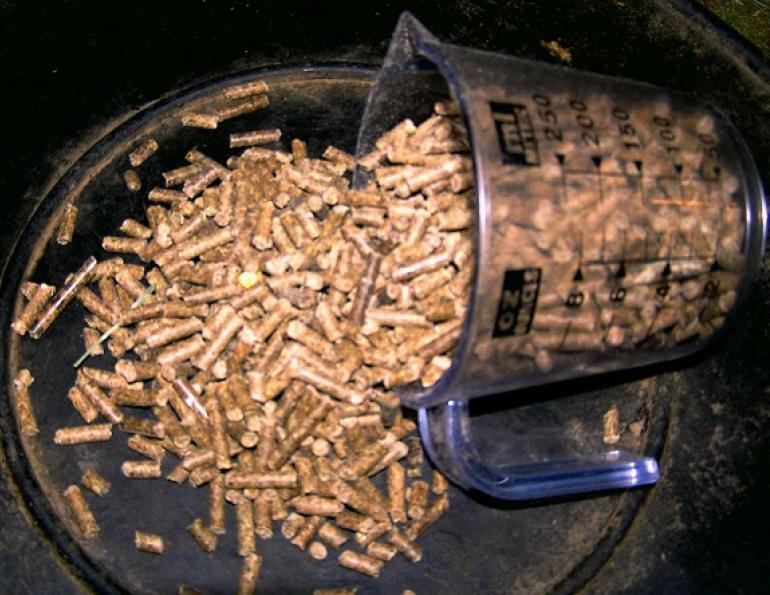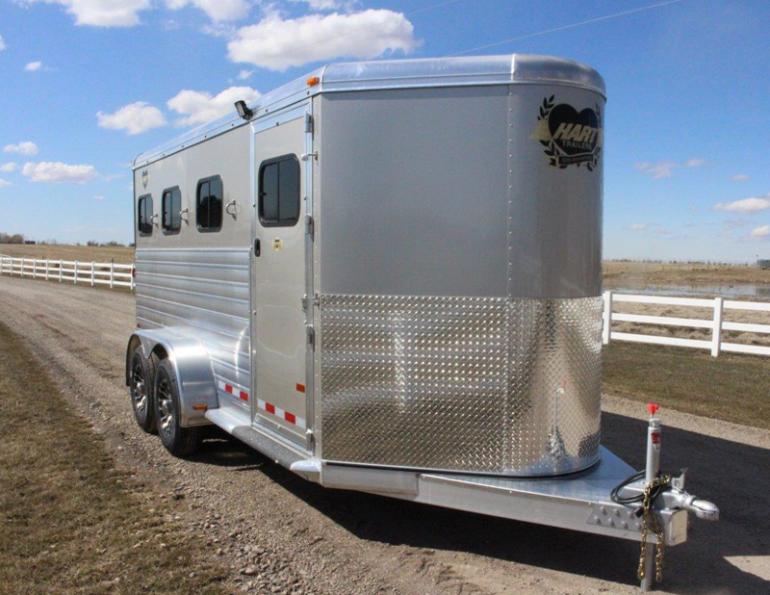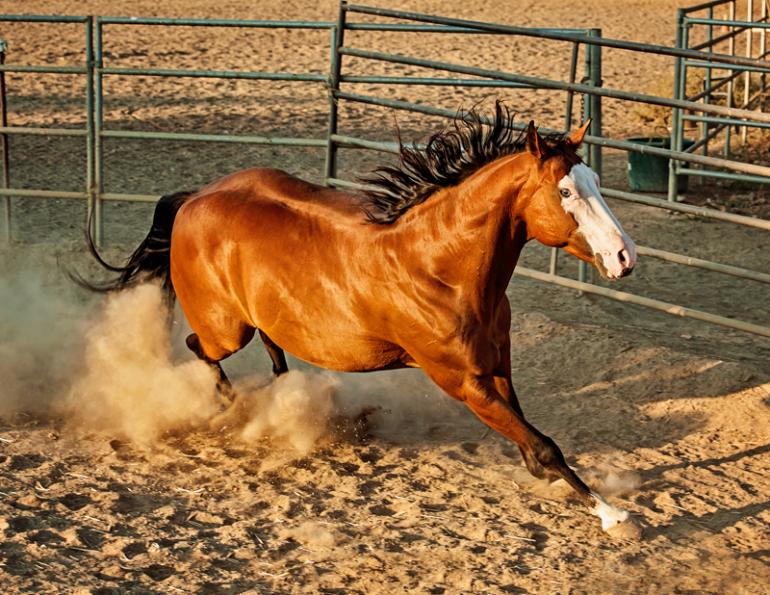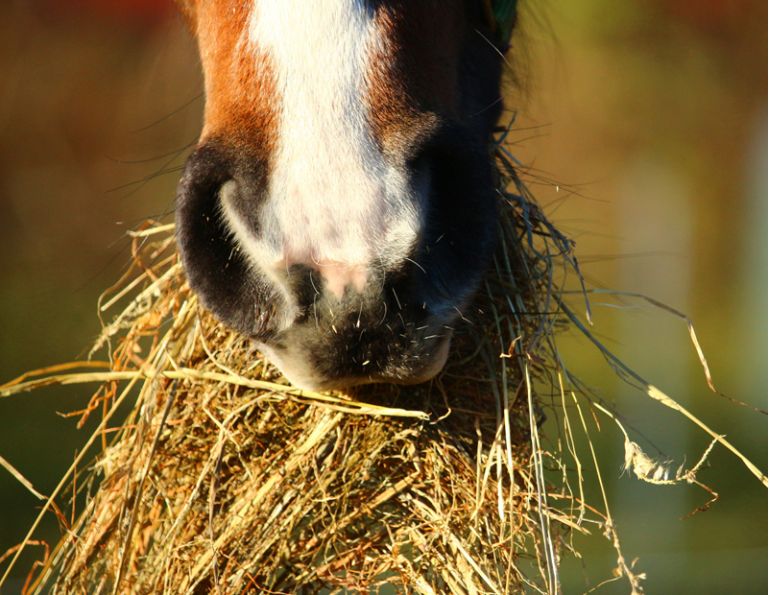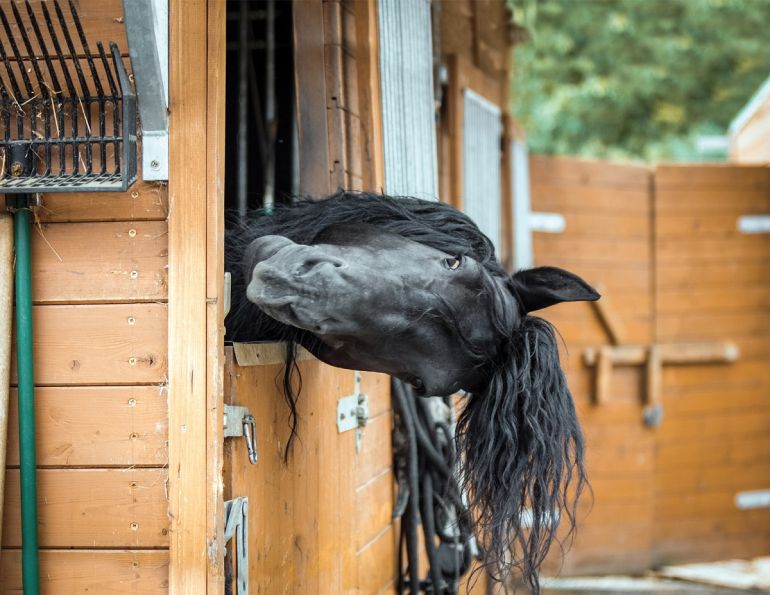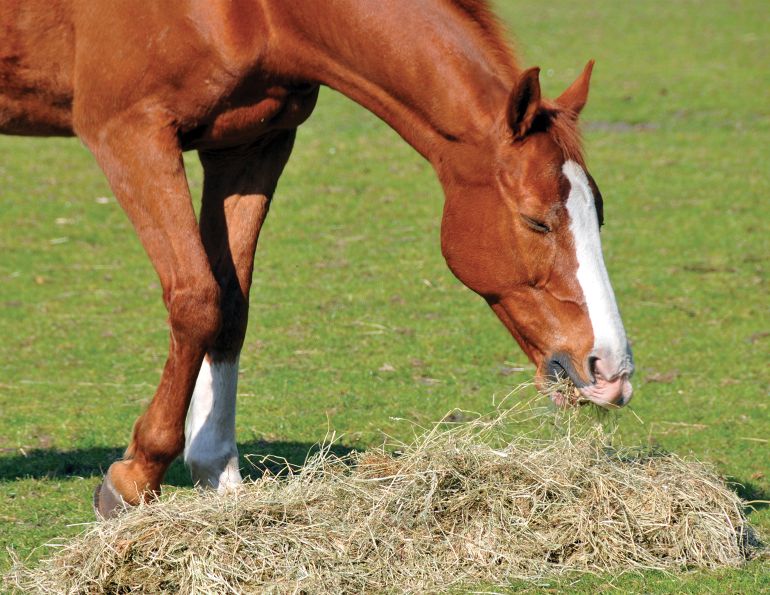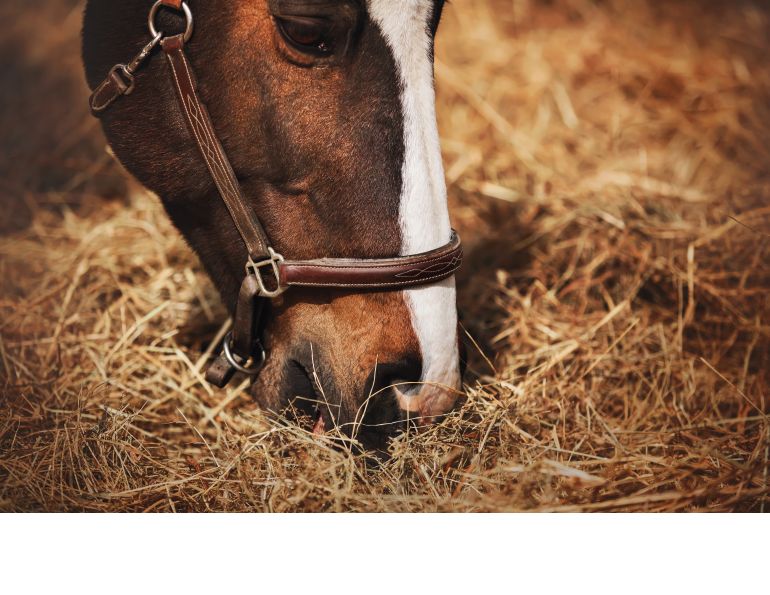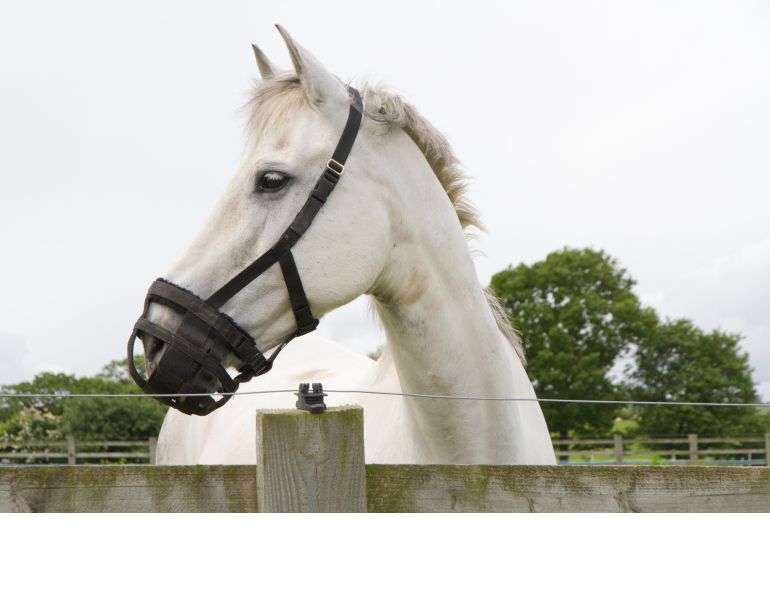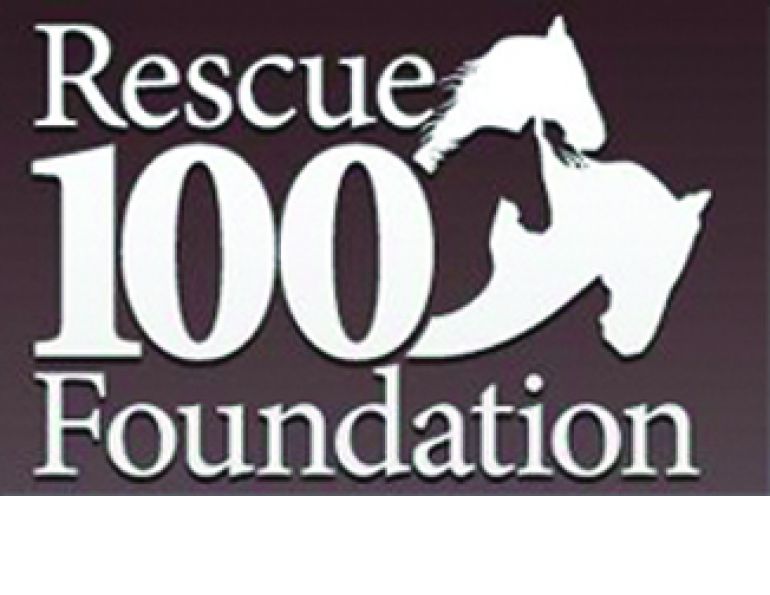By Juliet M. Getty, Ph.D.
“For an adult horse with moderate activity, feed .75 to 1.0 pounds per 100 pounds of body weight.” These are the feeding instructions for a popular commercially fortified feed. If your horse weighs 1100 pounds (500 kilograms), you’ll need to feed 8.25 to 11 pounds of feed per day to ensure he’s receiving enough calories, protein, vitamins, and minerals. That’s a lot of feed! That could amount to three to five two-quart scoops (depending on the weight of the feed) per day. And that amount should be divided into multiple feedings since meal size should never exceed 4 pounds (your horse’s stomach is small compared to the rest of his digestive tract).
Chances are excellent that you don’t feed anything close to the suggested amount. Does it matter? Yes. When you buy a fortified feed, most of what you pay for is the vitamins, minerals, and any special ingredients such as flaxseed and soybean meals which provide omega 3 fatty acids and protein. The only way your horse will benefit from these nutrients is to feed according to directions. Modify them and you’ll need to “supplement the supplement.” For example, let’s say a feed provides 100 IUs of vitamin E per pound. If you feed half of the recommended amount, say five pounds, your horse will only receive 500 IUs of Vitamin E per day, which is the bare minimum, according to the National Research Council, for an 1100 pound horse. Most equine nutritionists agree, however, that a horse of this size at maintenance would do better at amounts closer to 1,000 IUs per day. Furthermore, as activity increases, so does the vitamin E requirement. Therefore, supplementation would be appropriate.
Other nutrients provided to offer enough fat and protein may need to be supplemented when less than recommended amounts are fed; these might include omega 3 fatty acids, vitamins A and D, minerals such as copper and zinc, and a host of feedstuffs. As you can imagine, it becomes very tricky to figure out just how much to supplement. You could simply give half the supplement dosage if you are feeding half the fortified feed dosage. But to do this accurately, you should figure out how much your horse would have gotten if fed the recommended amounts, and then calculate how much supplement to feed to make up the difference. If you’re not comfortable with crunching numbers, your best source of information would be a qualified equine nutritionist.
The bottom line to “supplementing the supplement” is: Pay attention to labels, weigh your feed using a scale, not a scoop, and keep your calculator handy.
Dr. Juliet Getty is an internationally respected equine nutritionist available for private consultations and speaking engagements. At www.gettyequinenutrition.com, sign up for her informative—and free—monthly newsletter, Forage for Thought, read articles, join her nutrition forum, enroll in upcoming teleseminars, buy gift certificates, and purchase previously recorded events. Contact Dr. Getty directly at gettyequinenutrition@gmail.com. 




